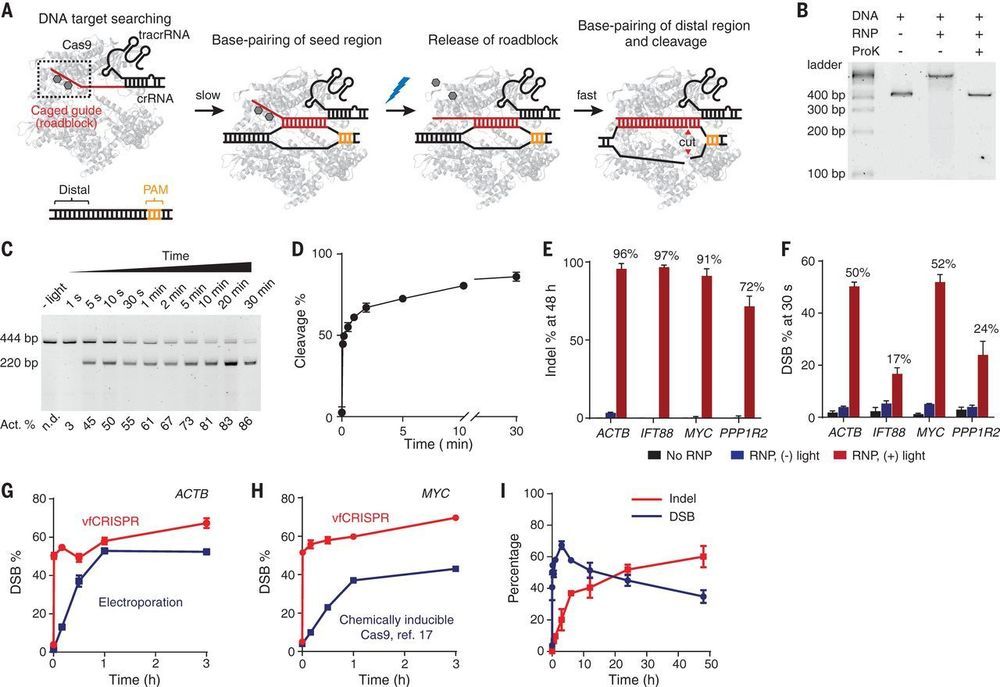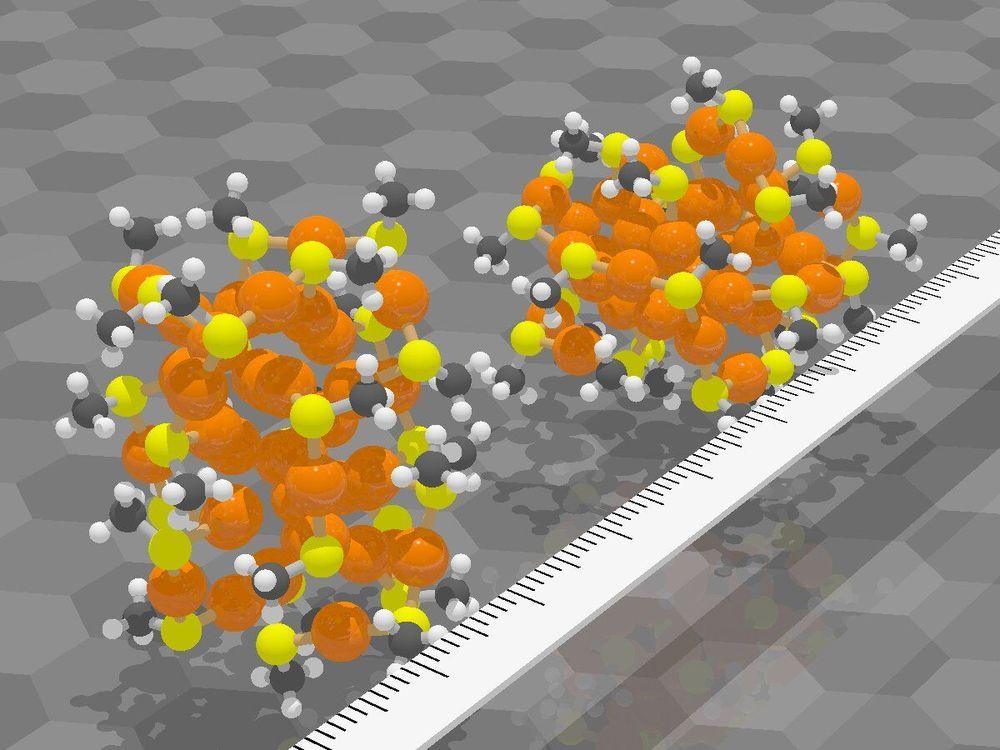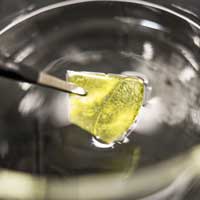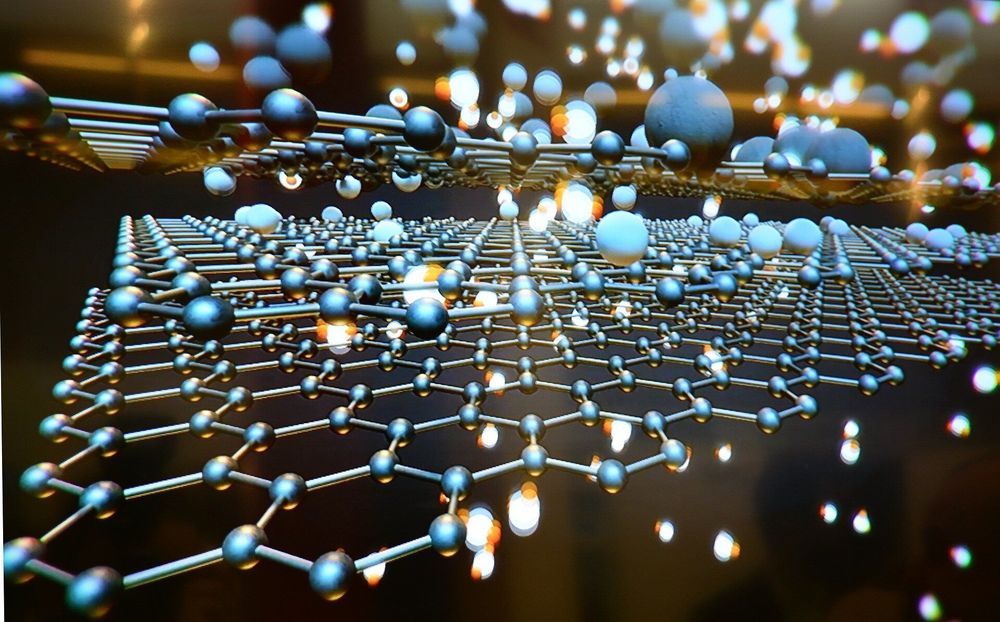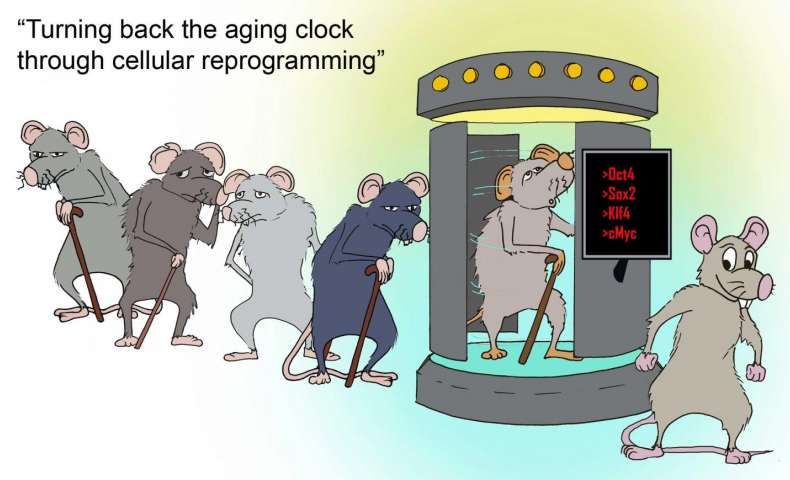Archive for the ‘chemistry’ category: Page 303
Jun 11, 2020
Very fast CRISPR on demand
Posted by Quinn Sena in categories: biotech/medical, chemistry
Numerous efforts have been made to improve the temporal resolution of CRISPR-Cas9–mediated DNA cleavage to the hour time scale. Liu et al. developed a Cas9 system that achieved genome-editing manipulation at the second time scale (see the Perspective by Medhi and Jasin). Part of the guide RNA is chemically caged, allowing the Cas9-guide RNA complex to bind at a specific genomic locus without cleavage until activation by light. This fast CRISPR system achieves genome editing at high temporal resolution, enabling the study of early molecular events of DNA repair processes. This system also has high spatial resolution at short time scales, allowing editing of one genomic allele while leaving the other unperturbed.
Science, this issue p. 1265; see also p. 1180
CRISPR-Cas systems provide versatile tools for programmable genome editing. Here, we developed a caged RNA strategy that allows Cas9 to bind DNA but not cleave until light-induced activation. This approach, referred to as very fast CRISPR (vfCRISPR), creates double-strand breaks (DSBs) at the submicrometer and second scales. Synchronized cleavage improved kinetic analysis of DNA repair, revealing that cells respond to Cas9-induced DSBs within minutes and can retain MRE11 after DNA ligation. Phosphorylation of H2AX after DNA damage propagated more than 100 kilobases per minute, reaching up to 30 megabases. Using single-cell fluorescence imaging, we characterized multiple cycles of 53BP1 repair foci formation and dissolution, with the first cycle taking longer than subsequent cycles and its duration modulated by inhibition of repair. Imaging-guided subcellular Cas9 activation further facilitated genomic manipulation with single-allele resolution.
Jun 11, 2020
Cheese Triggers the Same Part of Brain as Hard Drugs
Posted by Quinn Sena in categories: biotech/medical, chemistry, food, neuroscience
Independent.co.uk
Cheese contains a chemical found in addictive drugs, scientists have found.
The team behind the study set out to pin-point why certain foods are more addictive than others.
Continue reading “Cheese Triggers the Same Part of Brain as Hard Drugs” »
Jun 11, 2020
Psilocybin Alters Brain Levels Of The Neurotransmitter Glutamate — And This Could Explain Why Users Experience “Ego Dissolution”
Posted by Xavier Rosseel in categories: biotech/medical, chemistry, health, neuroscience
Recent therapeutic trials of “classical” psychedelic drugs, such as psilocybin (from magic mushrooms) or LSD, have reported benefits to wellbeing, depression and anxiety. These effects seem to be linked to a sense of “ego dissolution” — a dissolving of the subjective boundaries between the self and the wider world. However, the neurochemistry behind this effect has been unclear. Now a new paper, published in Neuropsychopharmacology, suggests that changes in brain levels of the neurotransmitter glutamate are key to understanding reports of ego dissolution — and perhaps the therapeutic effects of psychedelics.
Natasha Mason at Maastricht University, the Netherlands, and colleagues recruited 60 participants for their study. All had taken a psychedelic drug before, but not in the three months prior to the study. Half received a placebo and the other half were given a low to moderate dose of psilocybin (0.17 mg/kg of body weight).
The team then used a technique called proton magnetic resonance spectroscopy (MRS) to look at concentrations of glutamate (as well as other neurochemicals) in the medial prefrontal cortex (mPFC) and the hippocampus — two regions that have been implicated as key to the psychedelic drug experience. The team also looked at patterns of “functional connectivity” within networks of brain regions, a measure of how closely correlated brain activity is across those regions. Six hours after taking the drug or placebo, the participants reported on their subjective experiences using two surveys: The 5 Dimensions of Altered States of Consciousness and the Ego Dissolution Inventory.
Jun 10, 2020
Machine learning predicts nanoparticle structure and dynamics
Posted by Genevieve Klien in categories: biotech/medical, chemistry, nanotechnology, robotics/AI, supercomputing
Researchers at the Nanoscience Center and at the Faculty of Information Technology at the University of Jyväskylä in Finland have demonstrated that new distance-based machine learning methods developed at the University of Jyväskylä are capable of predicting structures and atomic dynamics of nanoparticles reliably. The new methods are significantly faster than traditional simulation methods used for nanoparticle research and will facilitate more efficient explorations of particle-particle reactions and particles’ functionality in their environment. The study was published in a Special Issue devoted to machine learning in the Journal of Physical Chemistry on May 15, 2020.
The new methods were applied to ligand-stabilized metal nanoparticles, which have been long studied at the Nanoscience Center at the University of Jyväskylä. Last year, the researchers published a method that is able to successfully predict binding sites of the stabilizing ligand molecules on the nanoparticle surface. Now, a new tool was created that can reliably predict potential energy based on the atomic structure of the particle, without the need to use numerically heavy electronic structure computations. The tool facilitates Monte Carlo simulations of the atom dynamics of the particles at elevated temperatures.
Potential energy of a system is a fundamental quantity in computational nanoscience, since it allows for quantitative evaluations of system’s stability, rates of chemical reactions and strengths of interatomic bonds. Ligand-stabilized metal nanoparticles have many types of interatomic bonds of varying chemical strength, and traditionally the energy evaluations have been done by using the so-called density functional theory (DFT) that often results in numerically heavy computations requiring the use of supercomputers. This has precluded efficient simulations to understand nanoparticles’ functionalities, e.g., as catalysts, or interactions with biological objects such as proteins, viruses, or DNA. Machine learning methods, once trained to model the systems reliably, can speed up the simulations by several orders of magnitude.
Jun 10, 2020
Renewable fuel from carbon dioxide with the aid of graphene and solar energy
Posted by Genevieve Klien in categories: chemistry, solar power, sustainability
Researchers at Linköping University, Sweden, are attempting to convert carbon dioxide, a greenhouse gas, to fuel using energy from sunlight. Recent results have shown that it is possible to use their technique to selectively produce methane, carbon monoxide or formic acid from carbon dioxide and water.
The study has been published in ACS Nano (“Atomic-Scale Tuning of Graphene/Cubic SiC Schottky Junction for Stable Low-Bias Photoelectrochemical Solar-to-Fuel Conversion”).
Plants convert carbon dioxide and water to oxygen and high-energy sugars, which they use as “fuel” to grow. They obtain their energy from sunlight. Jianwu Sun and his colleagues at Linköping University are attempting to imitate this reaction, known as photosynthesis, used by plants to capture carbon dioxide from air and convert it to chemical fuels, such as methane, ethanol and methanol. The method is currently at a research stage, and the long-term objective of the scientists is to convert solar energy to fuel efficiently.
Jun 10, 2020
Aerosol-printed graphene unveiled as low cost, faster food toxin sensor
Posted by Quinn Sena in categories: chemistry, food
Researchers in the USA have developed a graphene-based electrochemical sensor capable of detecting histamines (allergens) and toxins in food much faster than standard laboratory tests.
The team used aerosol-jet printing to create the sensor. The ability to change the pattern geometry on demand through software control allowed rapid prototyping and efficient optimization of the sensor layout.
Commenting on the findings, which are published today in the IOP Publishing journal 2-D Materials, senior author Professor Mark Hersam, from Northwestern University, said: “We developed an aerosol-jet printable graphene ink to enable efficient exploration of different device designs, which was critical to optimizing the sensor response.”
Jun 9, 2020
Novel photovoltaics generate electrical power from thermal sources
Posted by Quinn Sena in categories: chemistry, nuclear energy
Devices based on photon-assisted tunnelling could harvest energy from nuclear power stations, chemical manufacturing facilities and other sources of waste heat.
Jun 9, 2020
Laser beams for superconductivity: Research sheds light on unexpected physical phenomena
Posted by Quinn Sena in categories: chemistry, energy
A laser pulse, a special material, an extraordinary property which appears inexplicably. These are the main elements that emerge from a research conducted by an international team, coordinated by Michele Fabrizio and comprising Andrea Nava and Erio Tosatti from SISSA, Claudio Giannetti from the Università Cattolica di Brescia and Antoine Georges from the Collège de France. The results of their study have recently been published in the journal Nature Physics. The key element of the study is a compound of the most symmetrical molecule that exists in Nature, namely C60 bucky-ball, a spherical fullerene.
It is well known that this compound, with the chemical formula K3C60, can behave as a superconductor — that is, conduct without dissipating energy — below a critical temperature of 20 degrees Kelvin, i.e. around −253 degrees Celsius.
It has recently been discovered that K3C60 is capable of transforming into a high-temperature superconductor when struck by an extremely brief laser pulse. This material takes on superconductive properties — albeit extremely briefly — up to a temperature of −73 degrees Centigrade, almost 100 degrees above the critical equilibrium temperature. The research just published by the scientists explains the reason for this mysterious behaviour.
There is great promise in 2020 that we might be able to make our bodies young without having to explicitly repair molecular damage, but just by changing the signaling environment.
Do we need to add signals that say “young” or remove signals that say “old”?
Does infusion of biochemical signals from young blood plasma rejuvenate tissues of an old animal? Or are there dissolved signal proteins in old animals that must be removed?

